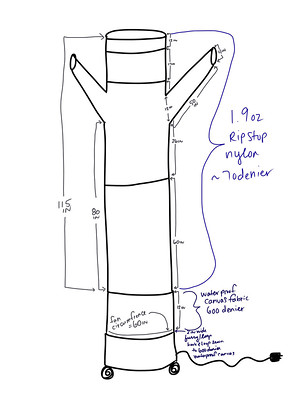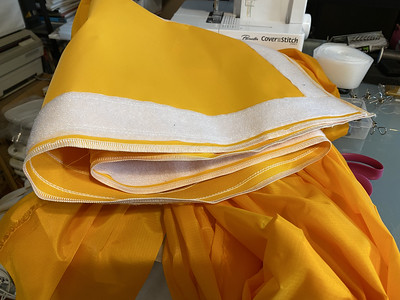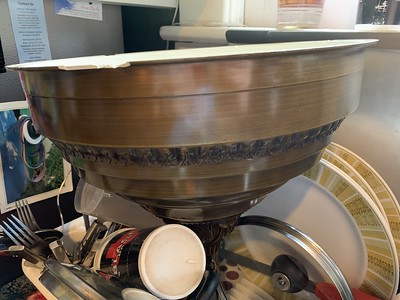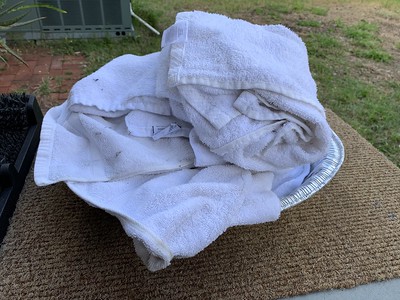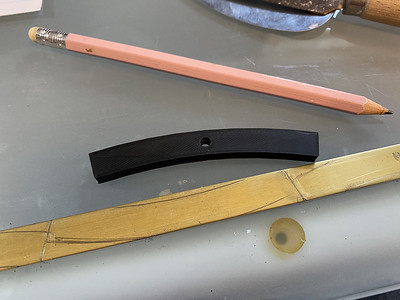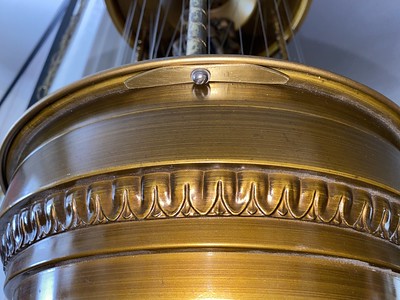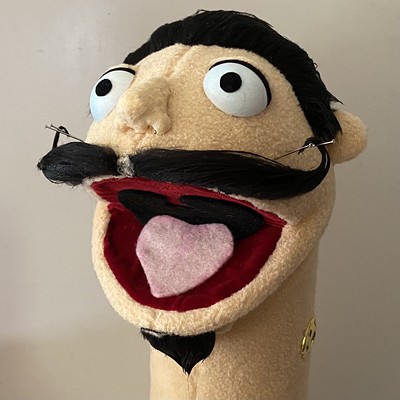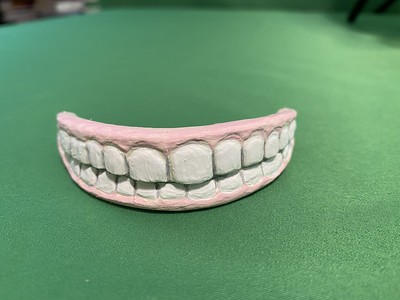Perhaps you've always wanted your own custom Skydancer but didn't know how to make one? Look no further. I will tell you how I made this Skydancer and what all of the measurements are and where I sourced the fabric and fan.
This drawing isn't exactly to scale, but it has all the measurements of the Skydancer you see pictured above. I also made one to model Wolfgang Flür from Kraftwerk. Here's the measurements for that Skydancer.
If you have a serger sewing machine, making a Skydancer is fairly straightforward with this pattern. I used the Vitruvian Man drawing by daVinci as the source for the proportions between head/face/torso. The proportions work regardless if your Skydancer is wearing "clothes" or not.
This Skydancer pattern will create a Tube Man somewhere between 14-15 feet in height. Measurements are indicated in inches on the pattern and the process photos below will assist you in placing the openings for the Tube Man arms.
I ordered the 1.9 ounce ~70 denier ripstop nylon from HERE, the waterproof 600 denier fabric from HERE, and the 2-inch wide hook and loop (you'll need the loop side as the fan will have the hook side pre-attached to the circumference of the fan base) from HERE. The fan I have is a Big Bear B-Air BB1 but the current model is a BB3. Total cost of fabric + the fan is around $289. Given that custom Skydancers are priced around anywhere from $100 - $200 not including the price of the fan, you could easily make your own or hire the services of a local person with a serger sewing machine like mine to make the Skydancer for you. I have a JUKI MO 654DE but any serger type sewing machine will work for this project.
The ripstop nylon is 60 inches wide which is exactly the same circumference as the base of the B-Air fan. Create a thicker bottom attachment section with the 600 denier waterproof canvas. This is the section you will sew your 2-inch loop fastener strip to in order to connect the base of your Skydancer to the B-Air fan.
I used a small salad plate (12 inches in diameter) to mark the arm openings. The arms taper to a 4-inch opening. The center of the "armpit" is 14.25 inches from the back seam (the fabric width including the selvage was 61 inches wide).
Here is what the loop strip will look like on your canvas bottom section. Sew a 60-inch strip around the base of the canvas section and then attach a hook and loop strip to each edge of the canvas 12 inch by 60-inch section to secure the canvas fabric closed once you've attached it to the base of the fan.
You can make the facial features out of the same ripstop nylon, serge the edges and sew them by hand to the Skydancer as seen here:
Here is the pattern for a basic Skydancer/Tube Man
Here is the Skydancer in action!!


